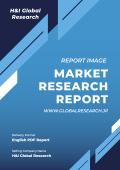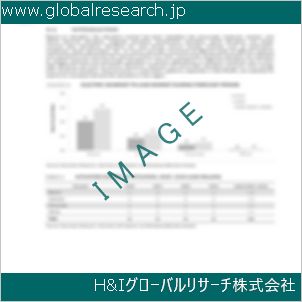Table of Contents
1 Industry Overview of Molybdenum
1.1 Definition and Specifications of Molybdenum
1.1.1 Definition of Molybdenum
1.1.2 Specifications of Molybdenum
1.2 Classification of Molybdenum
1.3 Applications of Molybdenum
1.3.1 Nuclear Application
1.3.2 Non-Nuclear Application
1.4 Industry Chain Structure of Molybdenum
1.5 Industry Overview and Major Regions Status of Molybdenum
1.5.1 Industry Overview of Molybdenum
1.5.2 Global Major Regions Status of Molybdenum
1.6 Industry Policy Analysis of Molybdenum
1.7 Industry News Analysis of Molybdenum
2 Manufacturing Cost Structure Analysis of Molybdenum
2.1 Raw Material Suppliers and Price Analysis of Molybdenum
2.2 Equipment Suppliers and Price Analysis of Molybdenum
2.3 Labor Cost Analysis of Molybdenum
2.4 Other Costs Analysis of Molybdenum
2.5 Manufacturing Cost Structure Analysis of Molybdenum
2.6 Manufacturing Process Analysis of Molybdenum
3 Technical Data and Manufacturing Plants Analysis of Molybdenum
3.1 Capacity and Commercial Production Date of Global Molybdenum Major Manufacturers in 2023
3.2 Manufacturing Plants Distribution of Global Molybdenum Major Manufacturers in 2023
3.3 R&D Status and Technology Source of Global Molybdenum Major Manufacturers in 2023
3.4 Raw Materials Sources Analysis of Global Molybdenum Major Manufacturers in 2023
4 Capacity, Production and Revenue Analysis of Molybdenum by Regions, Types and Manufacturers
4.1 Global Capacity, Production and Revenue of Molybdenum by Regions 2019-2024
4.2 Global and Major Regions Capacity, Production, Revenue and Growth Rate of Molybdenum 2019-2024
4.3 Global Capacity, Production and Revenue of Molybdenum by Types 2019-2024
4.4 Global Capacity, Production and Revenue of Molybdenum by Manufacturers 2019-2024
5 Price, Cost, Gross and Gross Margin Analysis of Molybdenum by Regions, Types and Manufacturers
5.1 Price, Cost, Gross and Gross Margin Analysis of Molybdenum by Regions 2019-2024
5.2 Price, Cost, Gross and Gross Margin Analysis of Molybdenum by Types 2019-2024
5.3 Price, Cost, Gross and Gross Margin Analysis of Molybdenum by Manufacturers 2019-2024
6 Consumption Volume, Consumption Value and Sale Price Analysis of Molybdenum by Regions, Types and Applications
6.1 Global Consumption Volume and Consumption Value of Molybdenum by Regions 2019-2024
6.2 Global and Major Regions Consumption Volume, Consumption Value and Growth Rate of Molybdenum 2019-2024
6.3 Global Consumption Volume and Consumption Value of Molybdenum by Types 2019-2024
6.4 Global Consumption Volume and Consumption Value of Molybdenum by Applications 2019-2024
6.5 Sale Price of Molybdenum by Regions 2019-2024
6.6 Sale Price of Molybdenum by Types 2019-2024
6.7 Sale Price of Molybdenum by Applications 2019-2024
6.8 Market Share Analysis of Molybdenum by Different Sale Price Levels
7 Supply, Import, Export and Consumption Analysis of Molybdenum
7.1 Supply, Consumption and Gap of Molybdenum 2019-2024
7.2 Global Capacity, Production, Price, Cost, Revenue, Supply, Import, Export and Consumption of Molybdenum 2019-2024
7.3 USA Capacity, Production, Price, Cost, Revenue, Supply, Import, Export and Consumption of Molybdenum 2019-2024
7.4 EU Capacity, Production, Price, Cost, Revenue, Supply, Import, Export and Consumption of Molybdenum 2019-2024
7.5 China Capacity, Production, Price, Cost, Revenue, Supply, Import, Export and Consumption of Molybdenum 2019-2024
7.6 Japan Capacity, Production, Price, Cost, Revenue, Supply, Import, Export and Consumption of Molybdenum 2019-2024
8 Major Manufacturers Analysis of Molybdenum
8.1 Manufacturer One
8.1.1 Company Profile
8.1.2 Product Picture and Specifications
8.1.2.1 Type I
8.1.2.2 Type II
8.1.2.3 Type III
8.1.3 Capacity, Production, Price, Cost, Gross and Revenue
8.1.4 Contact Information
8.2 Manufacturer Two
8.2.1 Company Profile
8.2.2 Product Picture and Specifications
8.2.2.1 Type I
8.2.2.2 Type II
8.2.2.3 Type III
8.2.3 Capacity, Production, Price, Cost, Gross and Revenue
8.2.4 Contact Information
8.3 Manufacturer Three
8.3.1 Company Profile
8.3.2 Product Picture and Specifications
8.3.2.1 Type I
8.3.2.2 Type II
8.3.2.3 Type III
8.3.3 Capacity, Production, Price, Cost, Gross and Revenue
8.3.4 Contact Information
8.4 Manufacturer Four
8.4.1 Company Profile
8.4.2 Product Picture and Specifications
8.4.2.1 Type I
8.4.2.2 Type II
8.4.2.3 Type III
8.4.3 Capacity, Production, Price, Cost, Gross and Revenue
8.4.4 Contact Information
8.5 Manufacturer Five
8.5.1 Company Profile
8.5.2 Product Picture and Specifications
8.5.2.1 Type I
8.5.2.2 Type II
8.5.2.3 Type III
8.5.3 Capacity, Production, Price, Cost, Gross and Revenue
8.5.4 Contact Information
…
9 Marketing Trader or Distributor Analysis of Molybdenum
9.1 Marketing Channels Status of Molybdenum
9.2 Traders or Distributors with Contact Information of Molybdenum by Regions
9.3 Ex-work Price, Channel Price and End Buyer Price Analysis of Molybdenum
9.4 Regional Import, Export and Trade Analysis of Molybdenum
10 Industry Chain Analysis of Molybdenum
10.1 Upstream Major Raw Materials Suppliers Analysis of Molybdenum
10.1.1 Major Raw Materials Suppliers with Contact Information Analysis of Molybdenum
10.1.2 Major Raw Materials Suppliers with Supply Volume Analysis of Molybdenum by Regions
10.2 Upstream Major Equipment Suppliers Analysis of Molybdenum
10.2.1 Major Equipment Suppliers with Contact Information Analysis of Molybdenum
10.2.2 Major Equipment Suppliers with Product Pictures Analysis of Molybdenum by Regions
10.3 Downstream Major Consumers Analysis of Molybdenum
10.3.1 Major Consumers with Contact Information Analysis of Molybdenum
10.3.2 Major Consumers with Consumption Volume Analysis of Molybdenum by Regions
10.4 Supply Chain Relationship Analysis of Molybdenum
11 Development Trend of Analysis of Molybdenum
11.1 Capacity, Production and Revenue Forecast of Molybdenum by Regions and Types
11.1.1 Global Capacity, Production and Revenue of Molybdenum by Regions 2024-2029
11.1.2 Global and Major Regions Capacity, Production, Revenue and Growth Rate of Molybdenum 2024-2029
11.1.3 Global Capacity, Production and Revenue of Molybdenum by Types 2024-2029
11.2 Consumption Volume and Consumption Value Forecast of Molybdenum by Regions, Types and Applications
11.2.1 Global Consumption Volume and Consumption Value of Molybdenum by Regions 2024-2029
11.2.2 Global and Major Regions Consumption Volume, Consumption Value and Growth Rate of Molybdenum 2024-2029
11.2.3 Global Consumption Volume and Consumption Value of Molybdenum by Types 2024-2029
11.2.4 Global Consumption Volume and Consumption Value of Molybdenum by Applications 2024-2029
11.3 Supply, Import, Export and Consumption Forecast of Molybdenum
11.3.1 Supply, Consumption and Gap of Molybdenum 2024-2029
11.3.2 Global Capacity, Production, Price, Cost, Revenue, Supply, Import, Export and Consumption of Molybdenum 2024-2029
11.3.3 USA Capacity, Production, Price, Cost, Revenue, Supply, Import, Export and Consumption of Molybdenum 2024-2029
11.3.4 EU Capacity, Production, Price, Cost, Revenue, Supply, Import, Export and Consumption of Molybdenum 2024-2029
11.3.5 China Capacity, Production, Price, Cost, Revenue, Supply, Import, Export and Consumption of Molybdenum 2024-2029
11.3.6 Japan Capacity, Production, Price, Cost, Revenue, Supply, Import, Export and Consumption of Molybdenum 2024-2029
12 New Project Investment Feasibility Analysis of Molybdenum
12.1 New Project SWOT Analysis of Molybdenum
12.2 New Project Investment Feasibility Analysis of Molybdenum
13 Conclusion of the Global Molybdenum (CAS 7439-98-7) Industry 2024 Market Research Report
| ※参考情報 モリブデン(Molybdenum)は、元素記号Moおよび原子番号42を持つ希少金属であり、周期表の遷移金属群に分類されます。この金属は、その特性からさまざまな用途で利用されています。モリブデンは、鉄やニッケルなどの金属よりも高い融点を持ち、優れた耐熱性と耐食性を備えていることが特徴です。また、強度が高く、硬度も大きいため、工業的なアプリケーションにおいて非常に重要な材料となっています。 モリブデンは自然界では主に鉱石として存在し、主な鉱石はモリブデン鉱(モリブデナイト、MoS₂)です。この鉱石は、硫化物鉱物の一種で、モリブデンの最も一般的な供給源です。モリブデンの抽出には、鉱石を加熱し、化学反応を利用して金属モリブデンを得る方法が一般的です。このプロセスには、通常、硫酸や塩酸を使用して不純物を取り除く工程が含まれます。 モリブデンの特性の一つに、高い融点が挙げられます。モリブデンは約2623度Cの融点を持ち、これは全ての元素の中でも最も高い部類に入ります。このため、高温環境での使用に適しており、航空宇宙産業や発電所など、極端な条件下においても安定した性能を発揮することができます。また、モリブデンは優れた強度を持ち、弾性限界や降伏強度が高いため、様々な合金の成分として使用されます。 モリブデンの用途は多岐にわたります。一つの主要な用途は、鋼や合金の添加元素としての利用です。モリブデンは、スチールにおいて耐久性を高め、熱疲労に対する抵抗力を強化します。また、鋼鉄におけるモリブデンの添加により、耐食性が向上し、特にクロムやニッケルと組み合わせることで、ステンレス鋼や高強度合金の製造に必要不可欠な材料となります。 また、モリブデンは、電気接点や真空チューブ、放電管のような電子機器においても利用されています。その高い融点と導電性の良さから、これらの製品において重要な役割を果たしています。さらに、モリブデンアクセサリーは、X線管や半導体製造装置の重要なコンポーネントとしても使用されています。 モリブデンは化学業界でも使用されます。例えば、触媒としてモリブデン化合物は、特に石油精製における硫黄除去過程(脱硫)で活躍しています。モリブデン化合物は、化学反応を促進する能力が高いため、精製プロセスを効率化します。 環境面では、モリブデンは栄養素としても知られており、植物にとって必要なトレースミネラルの一つです。農業においてモリブデンを含む肥料が利用され、作物の成長を促進する効果があります。特に豆類のような窒素固定植物においては、モリブデンが酵素の働きに不可欠であり、土壌の中で微生物がモリブデンを利用することで、植物の健康を支える重要な役割を果たしています。 モリブデンの関連技術には、新しい合金の開発や、モリブデンを活用したナノ材料の研究が含まれます。近年のナノテクノロジーの発展により、モリブデンナノシートやモリブデン酸化物ナノ粒子など、さまざまなナノスケールでの材料特性が注目されています。これらの材料は、エレクトロニクス、自動車産業、医療技術など広範な分野での応用が期待されています。 モリブデンの採掘や精製には環境面での配慮が求められるようになっています。生産プロセスにおいて発生する廃棄物や、モリブデンの鉱山活動が環境に与える影響についても研究が進められ、持続可能な利用のための技術開発が行われています。再利用の観点からも、モリブデンはリサイクルが可能な金属であり、使用済みの合金から回収して再び利用することができます。これによって、資源の効率的な利用が図られ、高騰する金属価格に対する対策ともなります。 このように、モリブデンは非常に多様な性質を持ち、多くの産業で欠かせない材料となっています。その高温耐性や強度、耐食性は、現代の技術社会において重要な役割を果たすとともに、将来の技術革新に向けてますます注目されることでしょう。モリブデンの研究や応用は、今後も進展し続けると考えられています。 |
❖ 免責事項 ❖
http://www.globalresearch.jp/disclaimer












